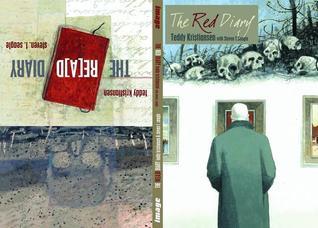What do you think?
Rate this book


144 pages, Hardcover
First published January 1, 2008
![The Red Diary/The Re[a]d Diary by Teddy Kristiansen and Steven T. Seagle](https://i.gr-assets.com/images/S/compressed.photo.goodreads.com/hostedimages/1446504863i/16818791.jpg)
![The Red Diary/The Re[a]d Diary by Teddy Kristiansen and Steven T. Seagle](https://i.gr-assets.com/images/S/compressed.photo.goodreads.com/hostedimages/1446504863i/16818792._SY540_.jpg)
![The Red Diary/The Re[a]d Diary by Teddy Kristiansen and Steven T. Seagle](https://i.gr-assets.com/images/S/compressed.photo.goodreads.com/hostedimages/1446504863i/16818793.jpg)
![The Red Diary/The Re[a]d Diary by Teddy Kristiansen and Steven T. Seagle](https://i.gr-assets.com/images/S/compressed.photo.goodreads.com/hostedimages/1446504863i/16818794.jpg)
![The Red Diary/The Re[a]d Diary by Teddy Kristiansen and Steven T. Seagle](https://i.gr-assets.com/images/S/compressed.photo.goodreads.com/hostedimages/1446504863i/16818795.jpg)
![The Red Diary/The Re[a]d Diary by Teddy Kristiansen and Steven T. Seagle](https://i.gr-assets.com/images/S/compressed.photo.goodreads.com/hostedimages/1446504863i/16818796.jpg)
Kunsten kan, på sin egan brutale måde, få alle til at føle en rus, som en frygtelig sygdom, men måske den smukkeste af alle sygdomme.
Constant can father’s sin even brutality made for all til it falls in ruin some in foretelling wisdom men made the mistake of all wisdoms.
Forever will man’s sins of brutality make for mankind until it fall in ruin wisdom itself foretells that man makes his mistakes in the name of wisdom.
Forever will man’s sins of brutality make pain for all men—until they fall to ruin—who claim that their mistakes were made in the name of a greater wisdom.